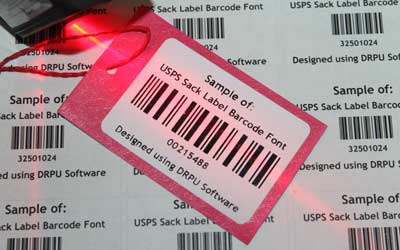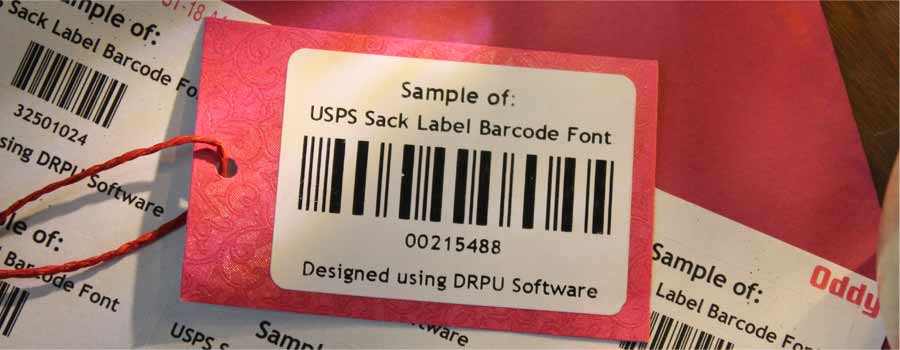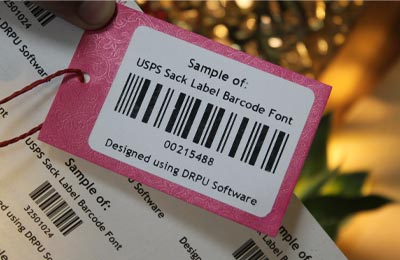Types Of Devices Can Read USPS Sack Label Barcode
USPS sack label barcodes are designed to be read by a variety of devices, including handheld barcode scanners, mobile devices, and computer systems. In this essay, we will explore the different types of devices that can read USPS sack label barcodes and discuss their advantages and limitations.
-
Handheld Barcode Scanners:
Handheld barcode scanners are the most common type of device used to read USPS sack label barcodes. These devices are portable and easy to use, making them ideal for postal workers who need to scan barcodes quickly and accurately. Handheld scanners use a laser or LED to read the barcode and typically display the decoded data on a built-in screen or transmit the data to a computer or other device. Handheld scanners are available in a variety of sizes and configurations, ranging from basic models to more advanced scanners with additional features such as wireless connectivity and integrated GPS.
-
Mobile Devices:
Mobile devices such as smartphones and tablets are also capable of reading USPS sack label barcodes. These devices use a built-in camera to capture an image of the barcode, which is then decoded using specialized software. Mobile devices are often used by postal workers who need to scan barcodes while on the move, as they can easily be carried in a pocket or bag. Mobile devices can also be used to track and manage shipments using USPS mobile applications, which allow users to scan barcodes and access tracking information directly from their device.
-
Computer Systems:
Computer systems are another type of device that can read USPS sack label barcodes. These systems typically use a dedicated barcode scanner connected to a computer or network to scan barcodes and input data into a database or other system. Computer systems are commonly used in USPS processing centers and other large-scale mail handling operations, where high volumes of mail must be processed quickly and efficiently. Barcode scanners used with computer systems are often more advanced than handheld scanners and may feature additional capabilities such as image capture and automatic data logging.
-
Limitations of Barcode
Reading Devices:
While there are many devices capable of reading USPS sack label barcodes, there are also some limitations to their use. One limitation is that the barcode must be clean and legible in order to be scanned accurately. If the barcode is damaged or obscured, it may not be readable by the device, which could lead to delays or errors in the mail processing and delivery process. Another limitation is that the device must be compatible with the type of barcode used on the sack label. USPS sack labels use a Code 128 barcode, which is a linear barcode format that requires a scanner capable of decoding this type of barcode.
In conclusion, USPS sack label barcodes can be read by a variety of devices, including handheld barcode scanners, mobile devices, and computer systems. Handheld scanners are the most common type of device used to read these barcodes and are ideal for postal workers who need to scan barcodes quickly and accurately. Mobile devices and computer systems are also capable of reading USPS sack label barcodes and are often used in large-scale mail handling operations. While there are some limitations to the use of barcode reading devices, these devices are an essential tool for ensuring the efficient and accurate processing and delivery of mail.
Download and Install Barcode Label Maker
Cost Of Implementing USPS Sack Label Barcode
The implementation of the USPS sack label barcode system can involve several costs, including the cost of equipment, software, training, and maintenance. In this essay, we will explore the various costs associated with implementing the USPS sack label barcode system.
-
Equipment Costs:
The first Equipment cost associated with implementing the USPS sack label barcode system is the cost of equipment. This includes barcode scanners, printers, and many other hardware required to read and print the barcodes label software. The cost of this equipment can vary depending on the type and quality of equipment required, as well as the volume of mail being processed.
-
Software Costs:
Another cost associated with implementing the USPS sack label barcode system is the cost of software. This includes the barcode creation software, tracking software, and other software required to manage the barcode system. The cost of this software can vary depending on the type and quality of software required, as well as the size and complexity of the system being implemented.
-
Training Costs:
Another cost associated with implementing the USPS sack label barcode system is the cost of training. This includes the cost of training personnel on how to use the barcode system, as well as the cost of training personnel on how to troubleshoot and maintain the system. The cost of this training can vary depending on the size and complexity of the system being implemented, as well as the number of personnel that need to be trained.
-
Maintenance Costs:
Another cost associated with implementing the USPS sack label barcode system is the cost of maintenance. Cost of repairing or replacing equipment that becomes damaged or outdated, as well as the cost of updating software and maintaining the system over time. Maintenance can vary depending on the size and complexity of the system being implemented, as well as the quality of the equipment and software being used.
-
Other Costs:
In addition to these direct costs, there may also be indirect costs associated with implementing the USPS sack label barcode system. For example, there may be costs associated with modifying existing processes and procedures to accommodate the new system, or there may be costs associated with data migration and integration with other systems.
-
Cost-Benefit
Analysis:
Before implementing the USPS sack label barcode label system, it is important to conduct a cost-benefit analysis to determine whether the benefits of the system outweigh the costs. This analysis system should consider both the direct and indirect costs of implementing the system, as well as the potential benefits of increased efficiency, accuracy, and customer satisfaction.
In conclusion, the implementation of the USPS sack label barcode system can involve several costs, including the cost of equipment, software, training, and maintenance. Before implementing the system, it is important to conduct a cost-benefit analysis to determine whether the benefits of the system outweigh the costs. While there may be some upfront costs associated with implementing the system, the benefits of increased efficiency, accuracy, and customer satisfaction may outweigh these costs in the long run.
Characters Can Be Encoded In A USPS Sack Label Barcode
The USPS sack label barcode is a type of linear barcode that is used to track and sort mail sacks as they move through the USPS mail processing system. The barcode encodes a unique identifier that provides information about the origin, destination, and contents of the mail sack.
In this answer, we will discuss the characters that can be encoded in the USPS sack label barcode and how they are used to track and sort mail sacks.

❖ The USPS sack label barcode is a modified version of the Code 128 symbology, which is a high-density linear barcode that can encode alphanumeric characters. The Code 128 symbology is capable of encoding all 128 ASCII characters, including uppercase letters, lowercase letters, numbers, and special characters.
❖ Each character in the USPS sack label barcode is encoded using a series of bars and spaces that represent the binary value of the character. The bars and spaces are read by a barcode scanner and converted back into the original characters using a lookup table.
❖ The USPS sack label barcode is designed to be read by automated mail processing equipment, such as barcode readers and scanners. These devices are capable of reading the barcode quickly and accurately, even when the label is partially obscured or damaged
❖ The USPS sack label barcode uses a subset of the Code 128 symbology to encode a 31-digit alphanumeric code that includes information about the mail sack. The 31-digit code is composed of the following elements:
Origin ZIP Code : The 5-digit ZIP Code of the origin facility.
Destination ZIP Code : The 5-digit ZIP Code of the destination
Mailer ID : A 6-digit code that identifies the mailer.
Service Type ID : A 3-digit code that identifies the type of service being used.
Mailer-Assigned Routing Code : A 9-digit code assigned by the mailer to identify the mail sack.
❖ In addition to these five elements, the 31-digit code may also include check digits and other characters used for error detection and correction.
❖ By encoding information about the origin, destination, and contents of the mail sack. Additionally, the USPS sack label barcode helps to ensure that mail is delivered to the correct destination in a timely manner, improving the overall quality of the USPS mail delivery service.
Generate A USPS Sack Label Barcode
Generating a USPS Sack Label Barcode (SLB) is a relatively straightforward process that requires the use of specialized software and equipment. In this essay, we will explain the steps involved in generating a USPS SLB, including the required equipment and software, and provide some tips for ensuring that the SLB is generated correctly.

01 The first step in generating a USPS SLB is to obtain the required equipment and software. The USPS provides a free software application called PostalOne! that allows users to generate SLBs. The software can be downloaded from the USPS website and is available for both Windows and Mac operating systems. In addition to the software, users will need a barcode printer capable of printing USPS-approved barcodes. The USPS provides a list of approved printers on their website.
02 Once the software and printer are obtained, the user can begin the process of generating a SLB. The first step is to enter the required information into the PostalOne! software. This information includes the origin and destination of the mail, the type of mail, and the weight of the mail sack. The software will then generate a unique SLB barcode for the mail sack based on this information.
03 After the SLB barcode is generated, it must be printed using the barcode printer. The barcode must be printed on a USPS-approved label that is affixed to the mail sack. The label must be placed in a specific location on the mail sack, as specified by the USPS. The label should be placed on the top of the sack, centered on the seam, and aligned with the bottom of the sack.
04 It is essential to ensure that the SLB barcode is printed correctly to avoid any issues with tracking and delivery. The barcode should be printed at a high resolution to ensure that it is legible to USPS scanners. The label should also be printed in black ink on a white background to ensure maximum contrast and readability. Finally, it is essential to ensure that the barcode printer is properly calibrated to ensure that the barcode is printed at the correct size and with the correct spacing.
05 Once the SLB label is printed and affixed to the mail sack, the sack is ready for delivery to the USPS. When the mail sack is received by the USPS, it will be scanned, and the SLB barcode will be read. The information contained in the barcode will be transmitted to the USPS database, allowing USPS managers to track the location of the mail sack in real-time.
In conclusion, generating a USPS Sack Label Barcode is a relatively simple process that requires the use of specialized software and equipment. The key steps involved in generating a SLB include entering the required information into the PostalOne! software, printing the barcode using a USPS-approved barcode printer, and affixing the label to the mail sack in the proper location. By following these steps and ensuring that the barcode is printed correctly, users can ensure the efficient and accurate tracking and delivery of their mail.
